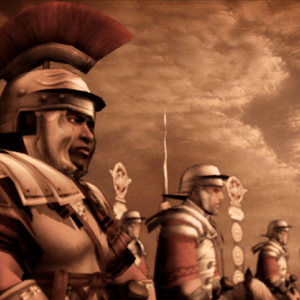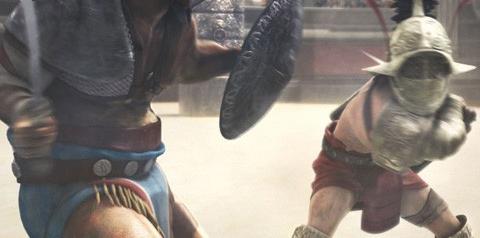
| Print This Page |

The monument, symbol of the city, was built in just eight years under the Vespasian's Empire starting from 72 AD where there was a lake. The huge amphitheater, which takes its name from to the nearby bronze statue of Nero (Colossum), had four levels of arches that, except for those at ground level which were used as entrance, could have hosted statues, completely disappeared today. Game: Colosseum - Road to Freedom File Name: Colosseum - Road to Freedom.7z File Size: 338.64 MB Genre: RPG System: Sony Playstation 2 Downloads: 21,526 Rating: (4.88. Colosseum post emergency medical Covid-19 - read carefully Access to the Colosseum, in this first phase, will be exclusively from the so-called 'Sperone Valadier' and can be used by individuals or groups of up to 20 people, adequately spaced, who will enter every 15 minutes and will always be accompanied along the entire route.
Believe in Jupitor
Completion bonuses
Easy money
Extended Stay
asked the second time, grudgingly accept the offer.
While travelling to Commodus' arena, Marcia will ask if it is time to liberate Rome. Choose no for the response. When you meet Commodus in his arena, kill him. Some events will occur. On day 49, Laetus will come and ask the player to be the
executioner. Answer with refusal until the question is no longer offered.
On day 50, do not leave the room. You can glitch the game by choosing to sleep the whole day. The game will now continue past day 50. The only exit available now is to accept punishment, fight the hundred guards and escaping.
Gladiator
Go beyond Day 50

Homeland Greece
Homeland Rome
Level Advance
Nobleman
Soldier
Weapon Profits
When we talk about holidays in Italy, usually we mean in Rome. And when someone comes to Rome, what’s the first thing they think of? The Roman Colosseum, the symbol of the Eternal City and of the whole of Italy. For this reason this blog is starting its journey to explore Italy right with the Colosseum and its history dating back thousands of years. It’s not only important for its size and magnificence but also and above all for what it represented in Ancient Rome: games and acts of violence against men and animals from all over the Roman Empire.
History of the Colosseum
The Colosseum was built by Emperor Vespasian on part of the site of Nero’s Domus Aurea (Golden House). Vespasian lived to see the completion of the first two floors. It was inaugurated in 80 AC by Tito, Vespasian’s successor, who added the third and fourth tiers of seating. On its inauguration Tito staged games which lasted all of 100 days during which over 5,000 animals were killed! Then Tito’s successor, Emperor Domitian made further modifications, completing the whole building with the addition of all the structures underneath the arena itself. After the completion of the works it was no longer possible to stage naumachia (reenactments of naval battles) in the arena, which had been a feature of the preceding era. During the Imperial age, the Colosseum played host to the largest and most cruel spectacles of the whole of Rome’s history. In 217 there was a fire which caused parts of the upper storeys to collapse and led to the closure of the amphitheatre for five years. With the end of the Empire, the Colosseum fell into decline: it was abandoned, reassigned as a burial ground, damaged by earthquakes, and was used as a source of building materials – where large blocks of the tavertine marble were removed. It then became redesignated as a Christian place of worship and people even lived there. In recent times it has been reclaimed and subject to repeated and extensive restoration, made necessary by its very poor state of repair following centuries of neglect.

What does the Colosseum represent today?
The Colosseum was the largest Amphitheatre in the world with a capacity of 50,000 to 80,000 spectators. It was the stage for Rome’s Games. This list shows the extent of what went on there: animal fights (venations); killings of prisoners condemned to death by wild animals; other kinds of executions and fights between gladiators. Such activities had a set programme: morning was for animal fights or fights between gladiators and animals; lunchtime was when people were put to death; and the afternoon was for the gladiator fights. Imagine, tens of thousands of animals and gladiators died in the Colosseum! Gladiator fights took place right up to 400 after which only animal fights took place in the Colosseum.
What does the name Colosseum actually mean?
First of all I need to say that its original name was not Colosseum but rather Amphitheatre Flavio, having been constructed during the Flavian dynasty. It acquired the name Colosseum during the Middle Ages because of its close proximity to the Colossus of Nero, the enormous statue of Emperor Nero.
Where is the Colosseum situated?
The Colosseum is situated on the eastern edge of the Roman Forum. You can get there easily – look for the metro stop Colosseo on the B line of the Rome metro. Getting off here, you’ll be able to enjoy one of the most beautiful walks in Rome: from the Colosseum to the Roman Forum, the Circo Massimo, and on to the Capitoline Hill and Altar of the Fatherland also known as the national monument to King Vittorio Emanuele II.
Colosseum Road To Freedom Iso
The second picture of this post is by Viacheslav Lopatin / Shutterstock.com